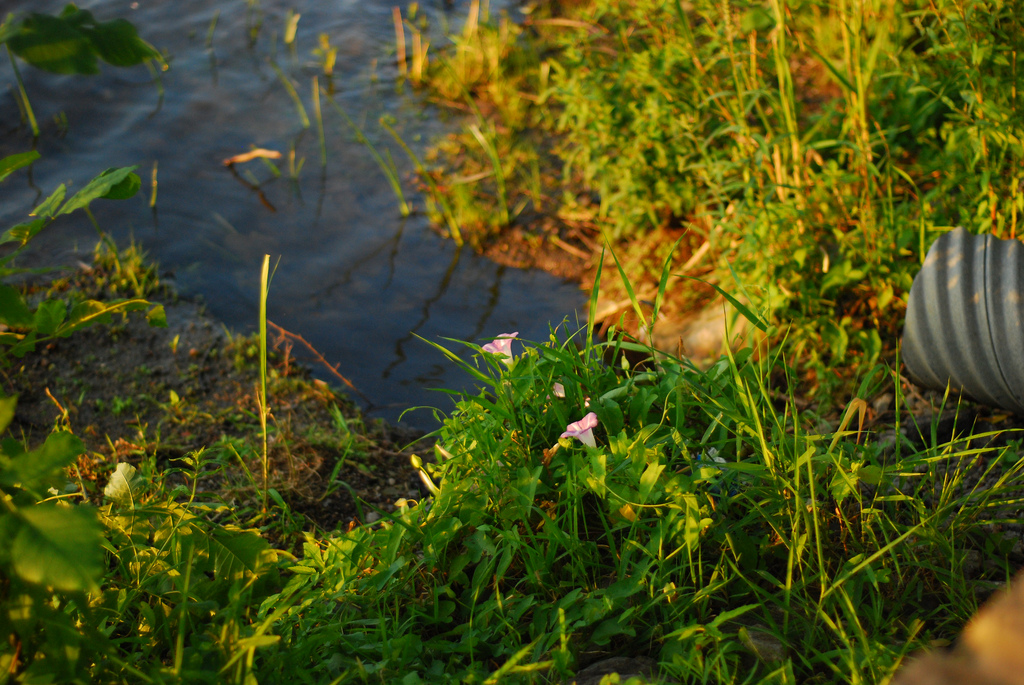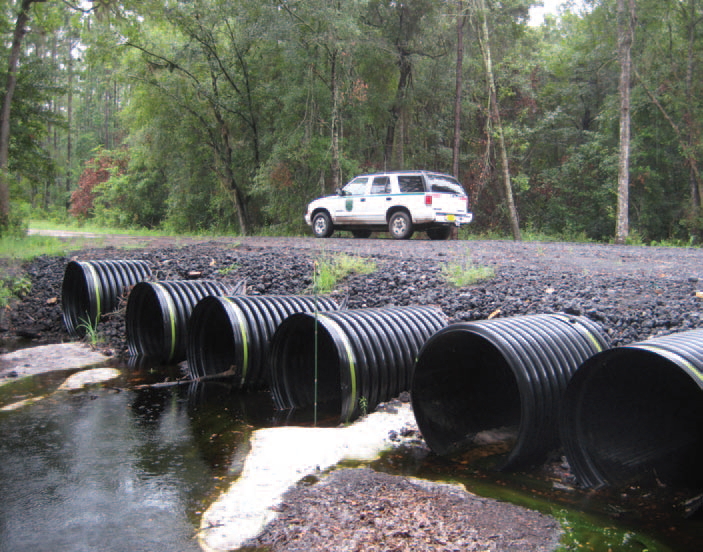Culverts: Where the Water Meets the Road
In 2004, Tree Farmer Harold Swaim was planning a 90-acre timber harvest in the North Carolina woods he has tended for more than 20 years. The only problem? Forty-five of those 90 acres lay on the other side of a large creek, and Swaim had no way to cross it.
“It’s a big creek—it carries a lot of water from the surrounding farms,” Swaim says.
 To conduct the harvest, Swaim needed to find a way for loggers to bring their equipment across this sizeable body of water—which ranged from six- to 12-feet wide—without blocking its flow. He would need a common but powerful engineering solution: a culvert.
To conduct the harvest, Swaim needed to find a way for loggers to bring their equipment across this sizeable body of water—which ranged from six- to 12-feet wide—without blocking its flow. He would need a common but powerful engineering solution: a culvert.
Culverts are structures that allow water to flow beneath a road or trail. Although they’re often seen under public roadways, they can be a necessity for private landowners as well, says forester and Florida Tree Farm Chair Roy Lima.
“When we put on workshops for landowners and industry foresters, we say culverts are ‘where the water meets the road,’” Lima says. “If you need to get across a stream, you need to think about installing a culvert.”
A Shortcut for Streams
The first step is to determine your needs, Lima says. Locate the narrowest and straightest point in your stream, and aim to cross the stream there perpendicular to its flow. If your crossing site is shallow and won’t be used often, you may not even need a culvert—a different kind of stream crossing, called a “low water hard surface crossing,” may do the trick. These crossings consist of rock and geowebbing (a perforated material that eases the water’s passage between the rocks) or other porous materials that can hold larger stones in place. Such crossings are generally no more than 12 inches high.
Deeper and wider streams will require a traditional culvert design, which features a circular, arch- or box-shaped pipe or opening set into the streambed and surrounding soil. To select the appropriate culvert size, look beyond a stream’s average flows and calculate the highest flows the stream could see, Lima says.
“We see a lot of culverts installed that are too small in diameter,” he says. “You want to size the culvert as if the channel was full of water, what we call ‘bank full stage.’ If it’s too small, there’s a risk for blowouts during a major storm.”
Larger streams may need larger box-shaped concrete or metal culverts to support the volume of water that moves through them. But many woodland owners with smaller and mid-sized streams will turn to pipe culverts, which are most often made of plastic or corrugated metal. Plastic pipes can be a good choice if cost and corrosion are a concern, as in acidic soils and waters. Metal pipes may be a better bet in areas frequently affected by fire, which can melt plastic pipes.
Once you’ve determined what you’ll need, make sure to get the proper permits in place, Lima says. You will be required to obtain a permit whether you plan to install your culvert yourself or hire a contractor for the task. Your consulting forester, state forestry agency or agriculture extension office can help guide you through the permitting process. These experts can also help you size your culvert correctly and advise you of any codes or regulations you must follow in your installation.
If you’re installing the culvert yourself, you will likely require a bulldozer, excavator or backhoe. Excavate the streambed about six inches, following the stream’s existing slope, and center and place the culvert so that the stream can easily flow into it. Then fill the area surrounding the culvert with soil, tamping it down and removing large rocks from the mix to firmly secure the culvert. Allow for at least a foot of fill (or half the diameter of the pipe, whichever is greater) between the culvert and the road surface—and once you’re done, make sure to stabilize the fill soil and surrounding banks by seeding and mulching them.
Swaim considers himself lucky, because Weyerhaeuser, the wood products company conducting his timber harvest, took care of his culvert building for him. The company projected water flows, installed the road and culvert, and left trees around the creek to protect its banks from erosion. Within three weeks, Swaim had a new road and culvert—and newfound knowledge to boot. “ It was definitely an educational experience,” he says. “Basically, I went over and watched them and asked them questions, and they did a fantastic job.”










Comments: